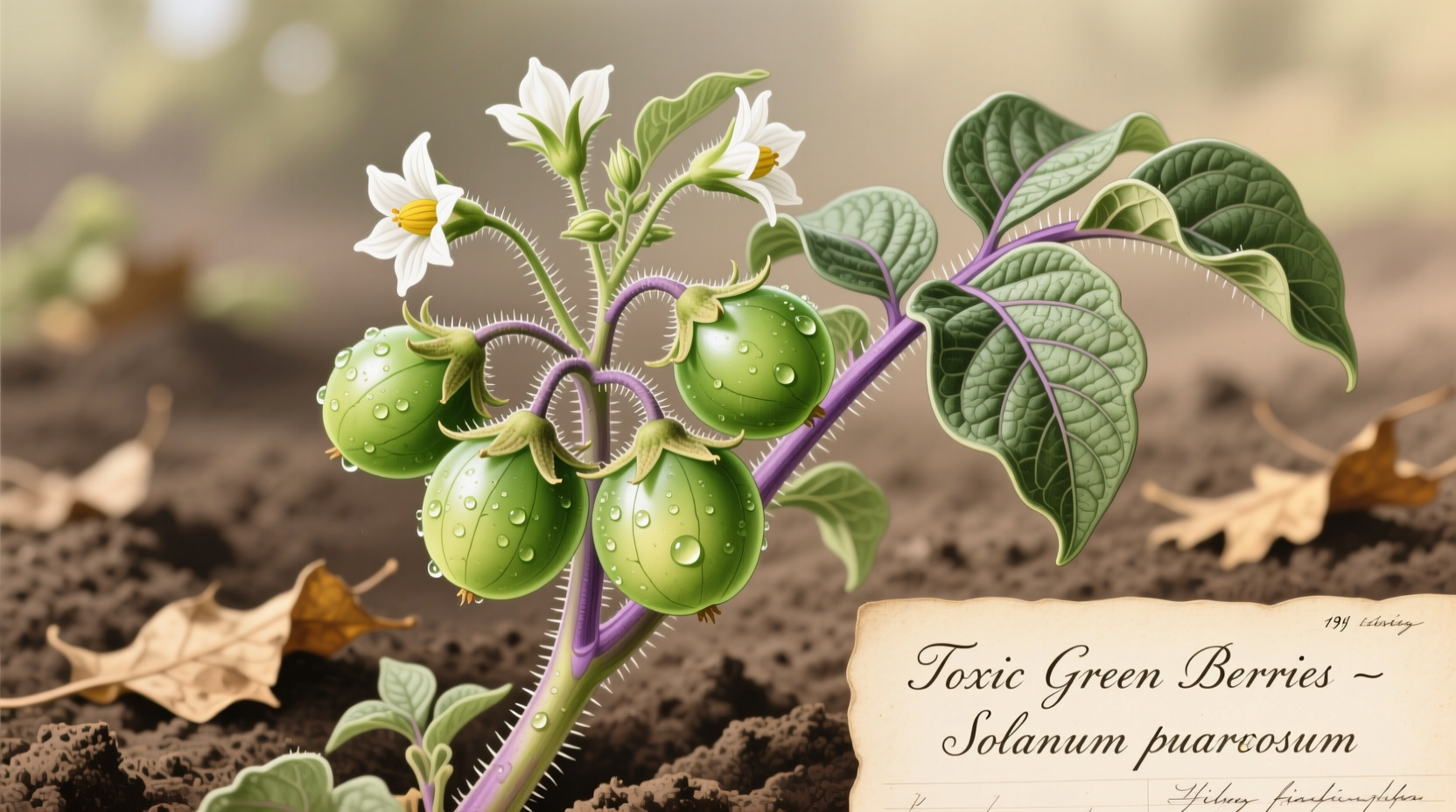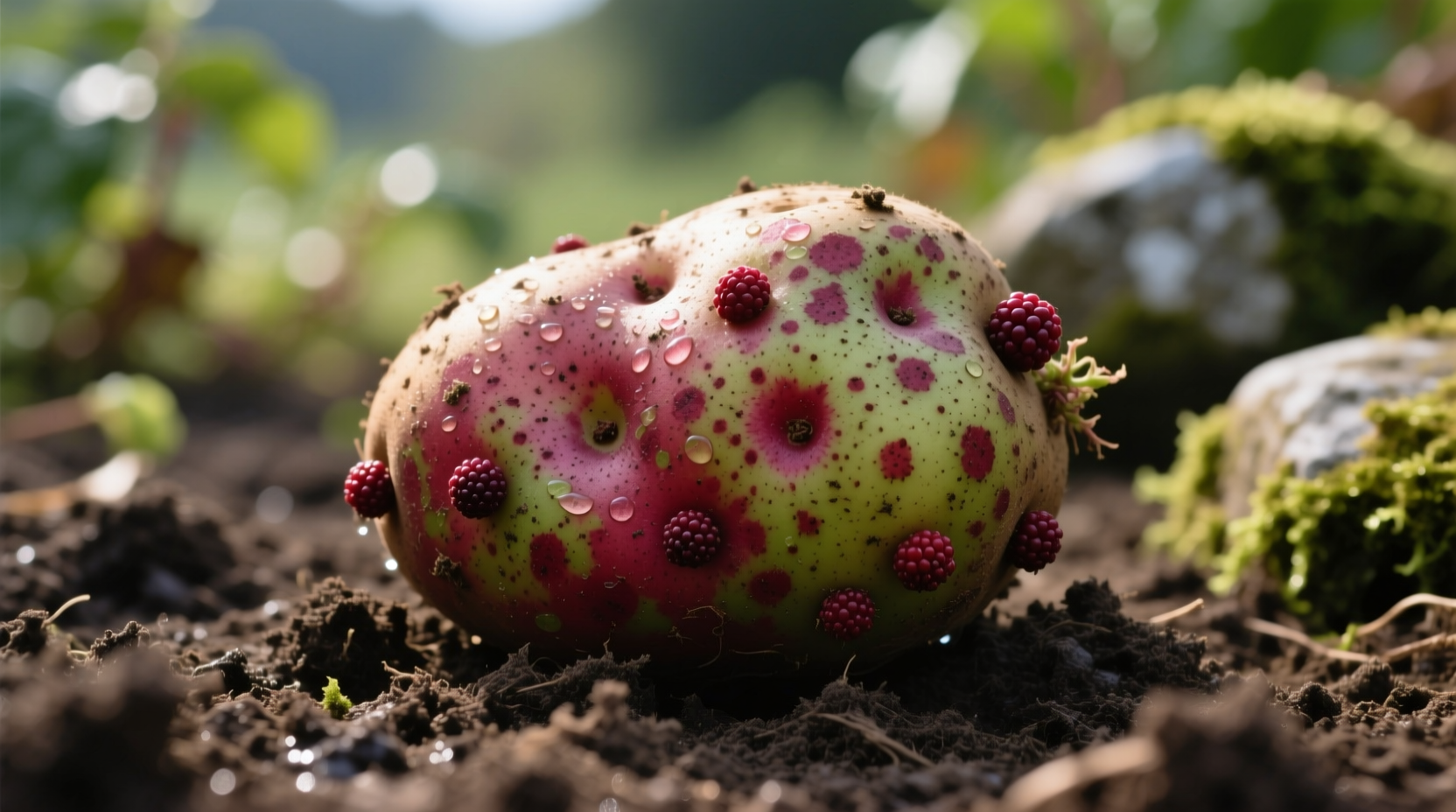Have you ever searched for "berry potato" wondering if there's a special variety that combines the sweetness of berries with the versatility of potatoes? You're not alone. Many home gardeners and curious food enthusiasts encounter this confusing term. Let's clarify this botanical mystery once and for all and help you find exactly what you're looking for.
Why "Berry Potato" Doesn't Exist as an Edible Crop
The term "berry potato" creates confusion because it mixes two completely different botanical concepts. Potatoes (Solanum tuberosum) are tubers that grow underground, while berries are fruits that develop above ground. What many people don't realize is that potato plants do produce actual berries—but these are not edible and should never be consumed.
Potato Berries: The Dangerous Truth
Potato plants occasionally produce small green or purple fruits that resemble tomatoes or berries. These are the plant's true fruits, containing seeds. Unlike the edible tubers we harvest, these berries contain high levels of solanine and other glycoalkaloids—natural toxins that protect the plant from pests.
| Characteristic | Potato Tubers (Edible) | Potato Berries (Toxic) |
|---|---|---|
| Location on Plant | Underground | Above ground, near flowers |
| Appearance | Round/oval tubers with "eyes" | Small green or purple tomato-like fruits |
| Safety | Safe when properly prepared | Poisonous, can cause illness |
| Edibility | Primary food source | Never consume |
According to the Centers for Disease Control and Prevention, consuming potato berries can cause symptoms including nausea, vomiting, diarrhea, headache, and in severe cases, neurological problems. Children are particularly vulnerable to these toxins.

What You Might Actually Be Looking For
When people search for "berry potato," they're usually seeking one of these actual food items:
Berry Tomatoes
These are small, sweet tomato varieties often called "berry tomatoes" or "grape tomatoes." They're popular in salads and as snacks. Unlike the mythical "berry potato," these are delicious and widely available. The University of California Agriculture and Natural Resources confirms that berry tomatoes are a distinct category of small-fruited tomato varieties bred specifically for their sweet flavor and compact size.
Sweet Potatoes
The confusion sometimes comes from mishearing "sweet potato" as "berry potato." Sweet potatoes (Ipomoea batatas) are completely different from regular potatoes and belong to the morning glory family. They're nutritious, versatile, and come in varieties with orange, purple, or white flesh.
Common Potato Varieties You Might Confuse with "Berry Potato"
While no potato variety is called "berry potato," several have names that might cause confusion:
- Berber potato: A rare heirloom variety with purple skin
- Bintje potato: A popular European yellow-fleshed variety
- Banana potato: An elongated yellow potato sometimes mistaken in conversation
- Berries and cream potato: Not a real variety, but a dessert concept
The USDA Agricultural Research Service maintains a comprehensive database of over 5,000 potato varieties, and none are officially designated as "berry potatoes." This information is verified through the USDA Potato Research Program.
How to Safely Identify Potatoes in Your Garden
If you're growing potatoes at home, here's how to avoid confusion:
- Know what to harvest: Only dig up the underground tubers, not the above-ground fruits
- Remove potato berries: If you see berries forming, remove them to prevent accidental ingestion
- Watch for greening: Any green parts on tubers indicate solanine presence—cut these away
- Store properly: Keep potatoes in cool, dark places to prevent sprouting and greening
According to Cornell University's Cooperative Extension, potato berries form most commonly in cool, wet growing seasons and on certain potato varieties. Their presence doesn't indicate anything wrong with your edible tubers, but they should be treated as hazardous waste.
What to Search For Instead
Based on what you're likely seeking:
- If you want small, sweet tomatoes: search for "berry tomatoes" or "grape tomatoes"
- If you're looking for unique potato varieties: search for "heirloom potato varieties"
- If you're concerned about potato plant safety: search for "potato plant toxicity"
- If you want sweet alternatives: search for "sweet potato varieties"
Understanding these distinctions helps you find accurate information, avoid potential health risks, and enjoy the right produce for your culinary needs. Whether you're a home gardener, chef, or simply curious about food, knowing the difference between these commonly confused terms ensures you're working with safe, accurate information.











 浙公网安备
33010002000092号
浙公网安备
33010002000092号 浙B2-20120091-4
浙B2-20120091-4